The Article
Sennheiser’s HD650s: Classic headphones bundled with Groove DAC…why?
21st October 2016
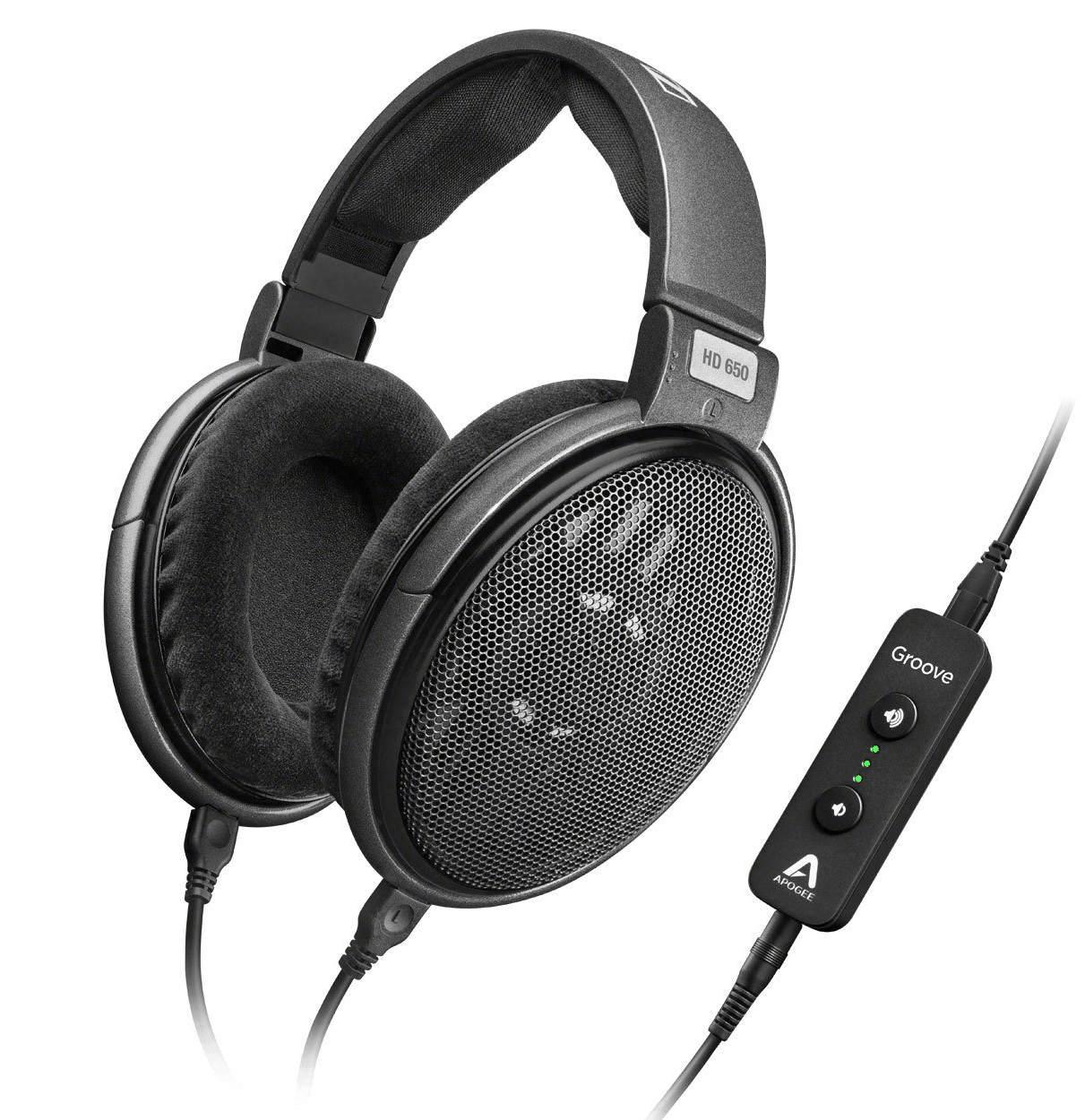
The HD650 headphones are iconic cans but what sort of performance can they offer hooked up to a Apogee Groove mobile DAC? Paul Rigby reviews the pairing to find out
I have a problem with the mere existence of this combo. I have to ask, “Why?” And I have to ask this question on so many levels.
Firstly, why do the HD650s need to be teamed up with the Groove DAC in the first place? And why the Groove? A small and mobile DAC for a mobile environment (i.e.: laptops, notebooks, etc.) If you are going to team it up with a DAC, then surely you’d go for something with a larger footprint, in the higher quality category that these headphones truly deserve.
Why are the HD650s even being associated with the mobile headphone genre in that case? This is a legendary design and should, in my opinion, be seen as home-based audiophile headphones only. If you go to Sennheiser’s own website and seek out their HD650 page. No, hang on, I’ll do that for you. Go HERE and see for yourself. The company describes this design as ideal for a ‘home’ entertainment system. Click on the associated video. Is there a male model, smiling eagerly, sitting with his laptop in Starbucks, sitting on the train or on a park bench? No. But there is video of guy sitting on a sofa, in his apartment, hooking his HD650s into a head amp.
OK, then. Let’s say that you’re determined to sell the mobile Groove DAC. Why, then, not team up the Groove with a pair of dedicated mobile headphones? Sennheiser sell plenty of those. They’re spoiled for choice, in fact.
On the face of it, this combo screams of someone needing to desperately dump a whole lot of Groove DACs and reaching for the first headphone design on the shelf to team it up with. A steady seller would be a great idea. Hey, why not the HD650s? Or someone is erroneously trying to reposition the HD650s in the current market as a mobile design because current sales have slowed. Whatever the reason, it’s not a good move. It really isn’t.
Teaming the ageing Groove DAC (which was initially sold at £250 in 2015 but is now valued by Sennheiser at a mere £100) is demeaning to the HD650s.
One more thing, after extended use, the Groove DAC runs hot. Now, look, we’re only just now trying to get over all of our Samsung phones blowing up and busting in flames. I’m not accusing Apogee of anything here (I’m sure the DAC is incredibly safe and would survive a nuclear engagement, so they can put their lawyers back in the box) but, really, in terms of PR, right at this moment, does Sennheiser really want to worry people by insisting that they carry around hot DACs in their pockets? The company gets 10/10 for cold winter day use (keeps the hands warm) but around 1/10 in terms of promoting worry and safety concerns.
In terms of practicalities for this review? The HD650 is a well known design so I’ll pass on describing that. The Groove has been out for around a year, includes a mini USB port for input from your computer, a headphone output and two volumes buttons. It’s a solidly built unit, though. Despite its simplicity.
SOUND QUALITY
I began with my SSD-powered Apple MacBook laptop and Audirvana software playing the 24bit/96kHz blues track sang by Harry ‘Big Daddy’ Hypolite, Big Bad Girl, this ageing blues shouter with a single guitar as the accompaniment impressed with both the power of his voice and the forceful nature of his guitar playing.
The HD650/Groove head amp combo showed an immediate life, bounce and pizazz in terms of the immediate presentation. I did experience a slight edge in terms of the upper mids that had a slightly strident nature. This could be best heard within the vocal crescendos. Nevertheless, I was happy to notice the precision and focus that was imminently recognisable in and around the exacting nature of the acoustic guitar strumming and string picking. This gave the song a rich flavour as the intricate nature of the string playing added sonic layers to the overall sound. Hypolite’s own vocal delivery may have had a slightly etched presentation that gave the upper mids a slightly aggressive edge but it also offered a useful spotlight to the bass areas of the delivery, adding texture to the soundstage.
Moving to the 16bit/44.1kHz WAV file of Carol Kidd’s A Nightingale Sang in Berkeley Square where Kidd fronts a jazz quartet of piano, drums, bass and guitar, I was impressed by the bouncy nature of the double bass which showed a resonant character that gave the beginning of this track drive and momentum. The piano, always the most difficult of instruments to convey well, even for very high-end equipment, was slightly unfocused here sounding rather blurred and chaotic and the Groove sounded a touch overwhelmed by the keys. Kidd’s vocal delivery was cool, slightly clinical in tone yet exacting and precise, much like the backing guitar that offered a detailed and meticulous solo back by punchy drums.
I wanted to utilise a more high energy track to finish and so turned to the Sugababes’ Blue, a chart ‘R&B’ (aka soul-pop) hit. This track is rather bright in terms of mastering and the HD650/Groove did nothing to mask that mastering personality but the HD650/Groove combo absolutely rocked this track. It was seriously musical, a foot tapper that pushed bass to the fore, kept that frequency tight with oodles of massy, punchy force to drive home the bold bass beat while giving an exacting and precise vocal performance. The slightly clinical edge to the Groove helped to reveal all aspects of this track, digging deep into the mix to expose even subtle details even brief synth excerpts.
CONCLUSION
Small and neat in stature, the Apogee Groove is a value for money headphone amplifier (at the current bundled £100 figure) that is easy to use and store and is ideal as part of a generally mobile environment…but for another set of headphones. Not the Sennheiser HD650 headphones. And that’s why the package as a whole receives a relatively low rating here. Individually, each component’s rating would be a lot higher. Despite the fact that the DAC is a good quality sonic design, as a technology partner, it drags the HD650s downwards because the Groove has inherent sonic limitations which the HD650s are forced to accommodate. In sonic terms, the Apogee is anything but subtle, enhancing the strong bass nature of the HD650 headphones to provide a big, in your face, low frequency performance with a fine-lined midrange edge that emphasises detail to the max but there is a relative lack of finesse, engagement and lucidity (when you place the DAC next to the HD650s potential) which makes the HD650s sound rough and ready. This a mismatch that does the HD650s no favours at all.
SENNHEISER HD650 & GROOVE DAC
Price: £499
Website: en-uk.sennheiser.com
GOOD: bass slam, precision, midrange insight, compact, price
BAD: clinical midrange, technology mismatch, market positioning errors, DAC runs hot
RATING: 5

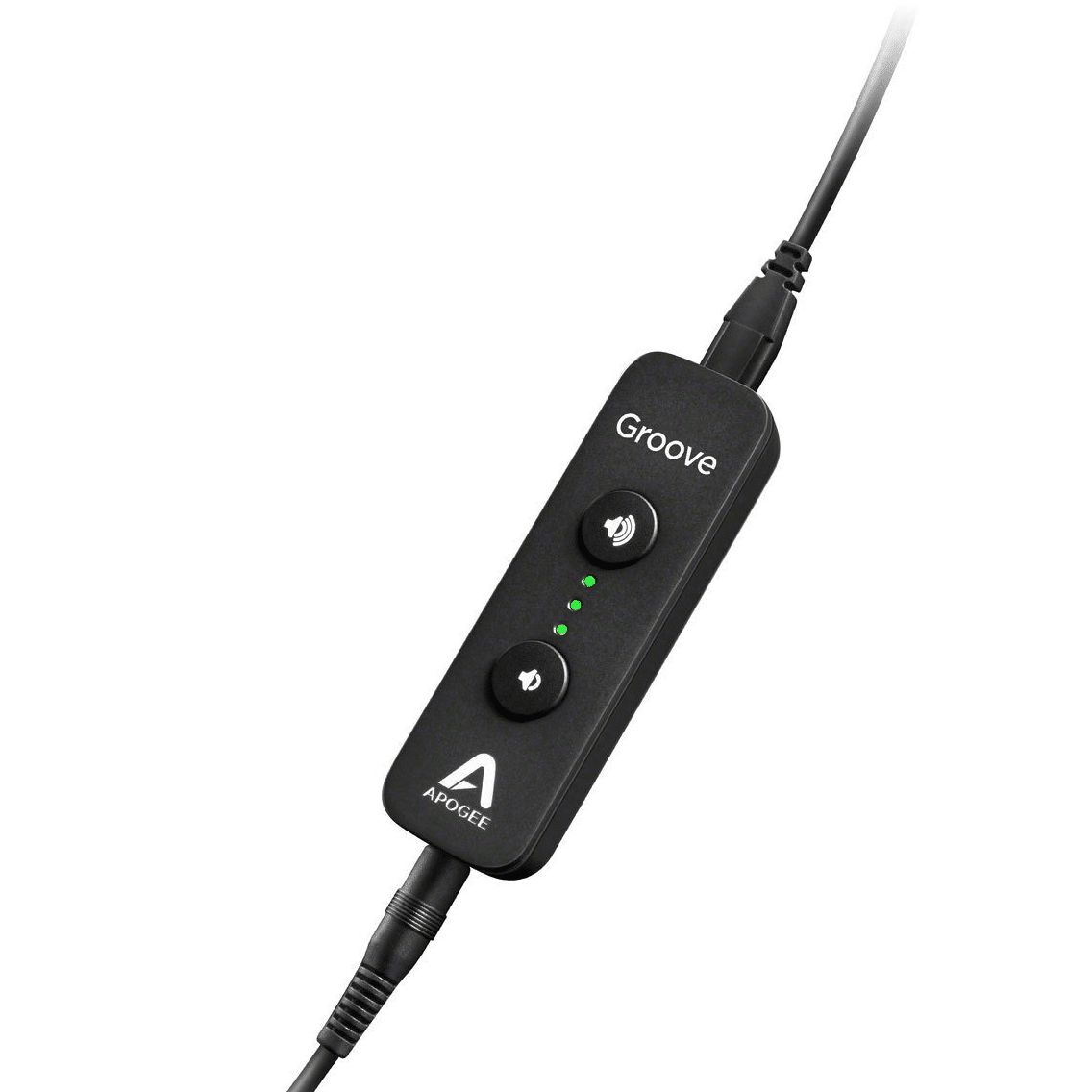
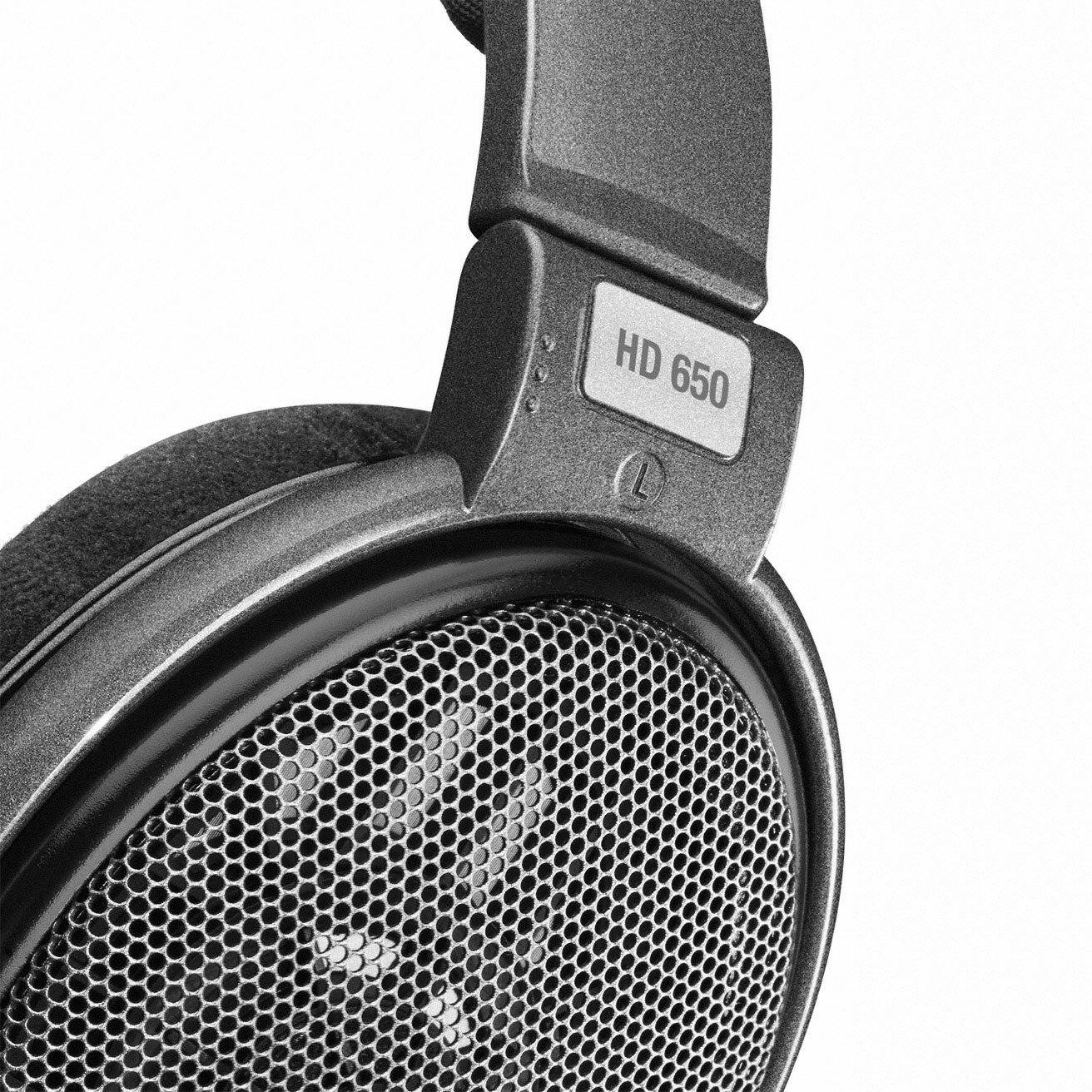
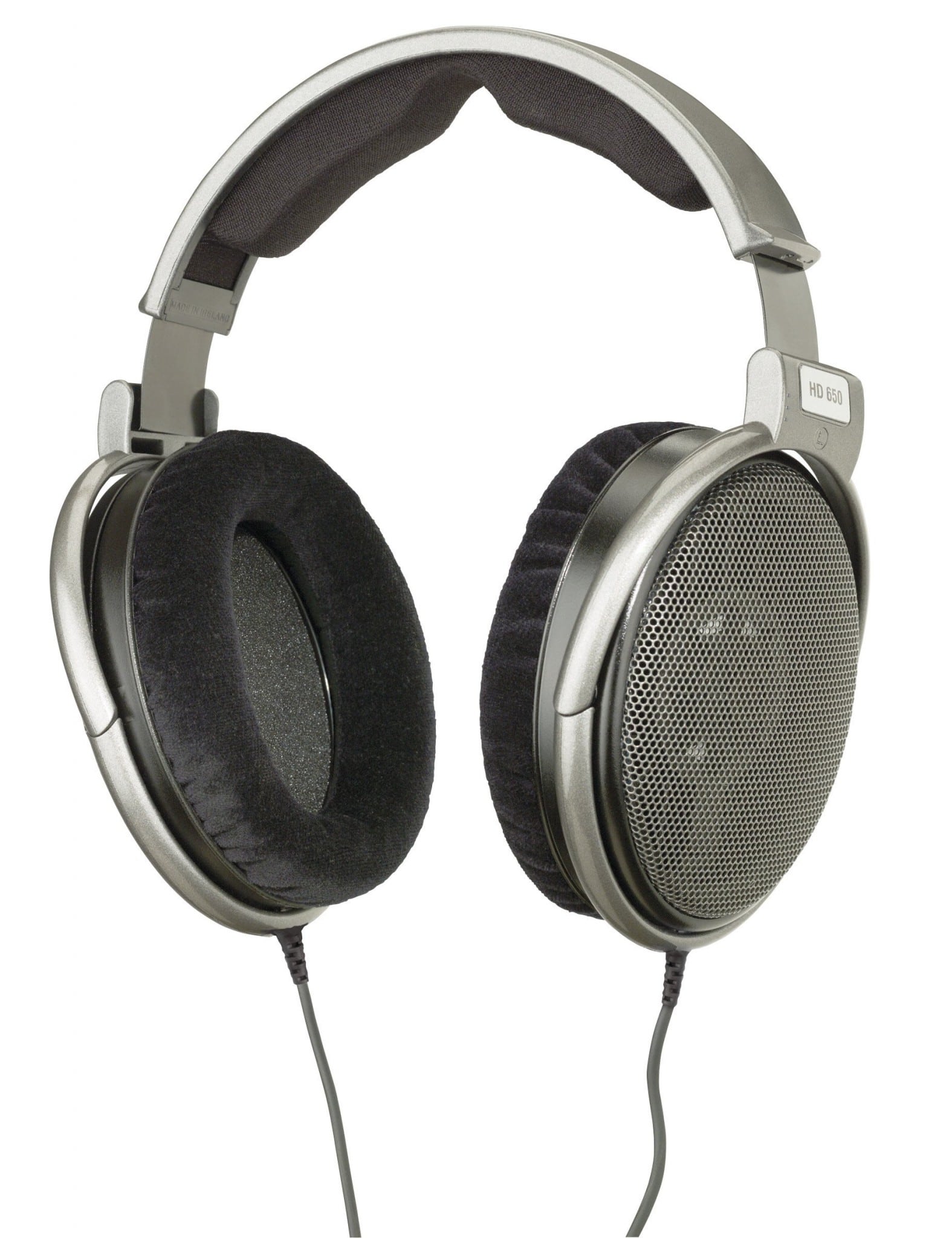
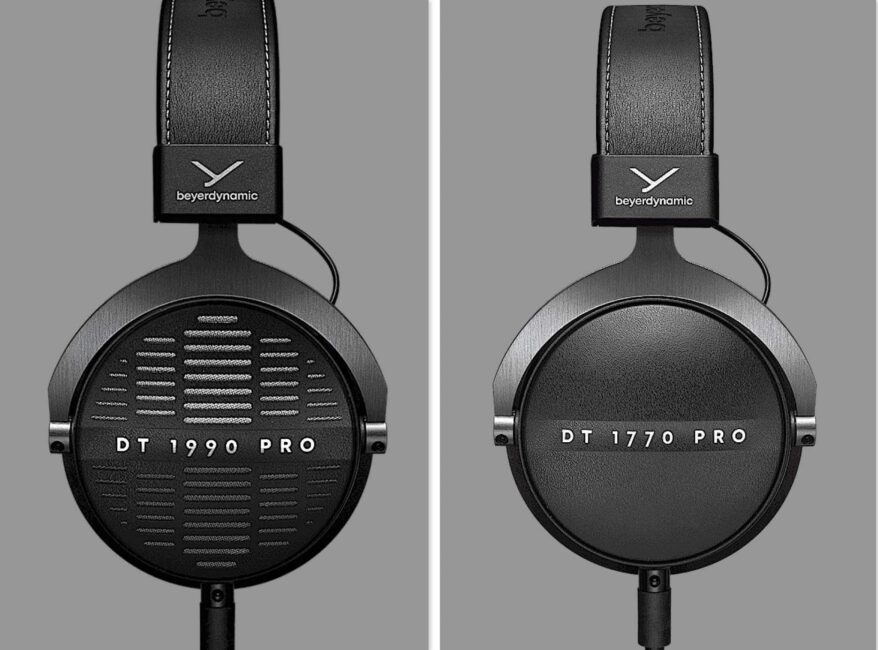

Hmmm I think the combination of the HD650 and the DAC amp are possibly targeted for mobile or office workers who want a ready-made solution to improve audio quality playback. That said, a closed headphone with a DAC would be a better fit as opposed to open headphones.
Thanks for that, AJ. I still believe that the combo is rather an awkward one, though. It’s a bit ’round peg into square hole’, for me.